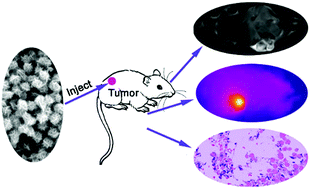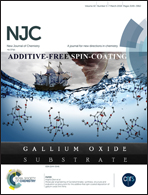Hydrophilic K2Mn4O8 nanoflowers as a sensitive photothermal theragnosis synergistic platform for the ablation of cancer†
Abstract
Achieving cancer diagnosis and treatment simultaneously, multifunctional nanomaterials lead the trend in the development of nanomedicine. Manganese-based compounds have been well developed as excellent magnetic resonance (MR) imaging contrast agents, while they have not been demonstrated as photothermal agents (PTAs) due to their unsatisfactory near-infrared photoabsorption. Herein, we report a hydrophilic flower-like K2Mn4O8 superstructure self-assembled by ultrathin nanosheets that can work simultaneously as a PTA and an ultrasensitive T1-weighted magnetic resonance imaging (T1-MRI) enhancing agent. These K2Mn4O8 nanoflowers are efficient vehicles transforming 808 nm laser energy into thermal energy and then leading to the effective ablation of cancer cells in vitro and in vivo. Importantly, with a high longitudinal relaxivity (r1) of 4.6 mM−1 s−1, they also act as quite impressive T1-MRI enhancing agents. Both in vitro and in vivo experiments confirmed their great biocompatibility, low toxicity and high photothermal conversion capability. This is the first application of K2Mn4O8 as a PTA and would hopefully promote other Mn-based theranostics.



 Please wait while we load your content...
Please wait while we load your content...